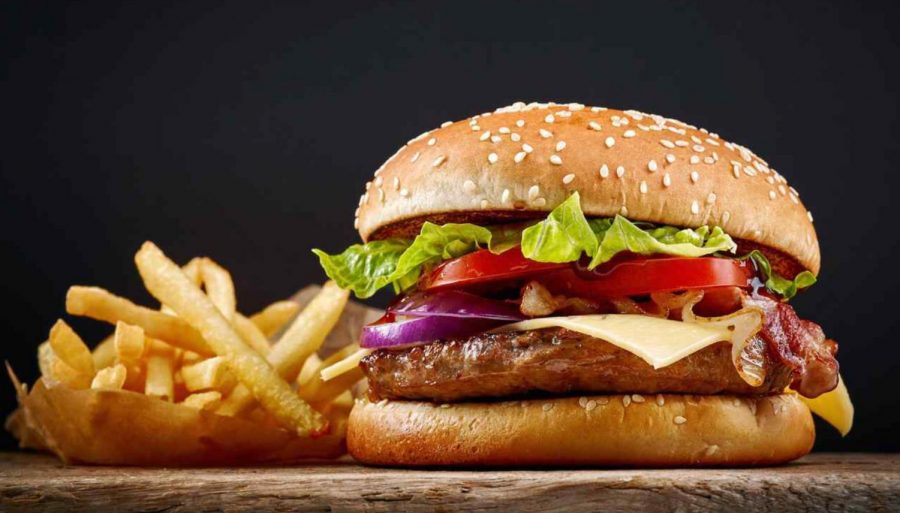The Truth Behind Fast Food
Do people know what is in fast food? Are people just intrigued by the succulent flavor of a fast food burger and fries? People are not aware of the truth behind what they are consuming. Hunger overcomes the minds of vulnerable individuals who will do anything to get their hands on fast food because the flavor is unparalleled.
Renee Jacques from the Huffington Post is on the same track to making people realize what is behind the scenes of your favorite fast food restaurants. She cited the statistic that there are “263,944 fast food restaurants in America.” She also explained, “These restaurants had a combined revenue of $100 billion. Eight in ten Americans eat fast food at least monthly, and half say they eat it weekly.”
Considering the number of fast food franchises, there is a fast food restaurant in every metropolitan area and most suburban areas. Convenience, cost, and overall desire are the main reasons people eat fast food according to Anne Pilon from AYTM online market research.
Fast food is extremely convenient. People can be in and out or through a “drive thru” in fewer than five minutes. People fall into the mindset of a time slot, making it extremely easy for people to make a quick stop, grab food, and go.
Given its convenience, fast food is generally extremely cheap compared to other food. People on average spend $7.65 per visit at a fast food restaurant. People on average spend $12.17 at a low-end, chain sit-down restaurant, according to Ashley Lutz, a writer for the Business Insider, Inc.
Overall desire for fantastic tasting fast food is also a major reason people cannot resist. Fast food restaurants use addictive ingredients such as sugar, fat, and salt. The main ingredient proven to be addictive is Casein.
Casein is considered “the nicotine in fast food.” Its highly addictive properties are the reason consumers keep coming back. “The problem with addictive foods like cheese is that they are acidic, and acidic foods tend to be fatty and sugary. These two food characteristics, fatty and sugary, when consumed in excess can have negative effects on your health by promoting problems such as weight gain,” wrote Emily Cardiff in an article for One Green Planet.
This moves to the point of what is in the food you are eating. People are unaware of what they are actually putting in their bodies just to fulfill the need for great tasting fast food. Fast food is modified to make it last longer, and taste better. These modifications are not always the healthiest.
For example, chicken tenders from McDonald’s are chicken, as expected. However, they are not the part of the chicken one might assume. The chicken is “mechanically separated,” which means “it is a mixture created when the bones and carcass of a leftover chicken are mixed together in a food processor,” according to Renee Jaques from the Huffington Post.
Another fast food that is highly desirable is Taco Bell. The tacos with sour cream, beef and cheese are considered delicious by many.
However, this flavor is not coming from the “100 percent ground beef.” The reality behind taco bell is the fact that their “beef” is only 36 percent real beef. The other 64 percent of their beef consists of foreign additives that improve taste, and preservatives to make it last longer in the kitchen.
Even when people think they are being healthy, they are not. One might figure, “I’ll just get a salad from McDonald’s as a healthier alternative.” Considering that they found a way to resist the great-tasting Big Mac is very commendable. Unfortunately, they are truly not helping themselves.
Although the calorie count of a salad might be better in a salad than a cheeseburger, chemicals are still entering the consumer’s system. Propylene glycol is the ingredient that keeps the great looking romaine lettuce leaves crisp.
Propylene glycol is the same chemical used in antifreeze, and other non-edible substances that do not enter the body.
There are too many facts to backup the reasoning behind why people eat fast food. No matter how much people are brainwashed into the realization that it isn’t healthy, people still continue to eat it.
More action needs to be taken on fast food. It affects the long term health of people, and is a leading cause for obesity in the United States. Consumption cannot be stopped, but it can be reduced. Hopefully awareness will increase as time proceeds, and people will reconsider every time they think about getting fast food.

Messineo came in as a freshman. He was on the JV football team. He plays lacrosse in the spring, and enjoys playing other sports as hobbies. He is very...

Johnston enjoys to golf, travel, and spend time with family and friends. He has been attending McQuaid since the seventh grade. Other than The Lance, he...















